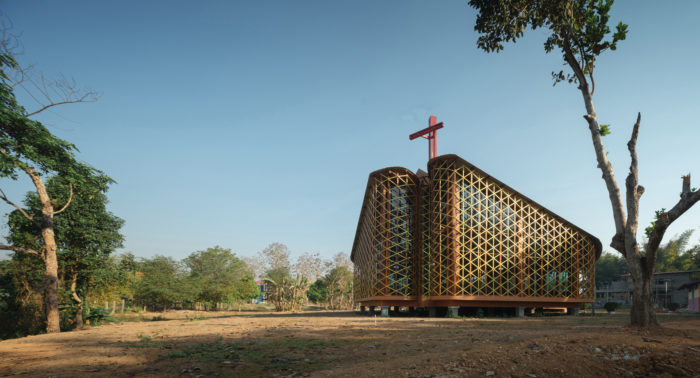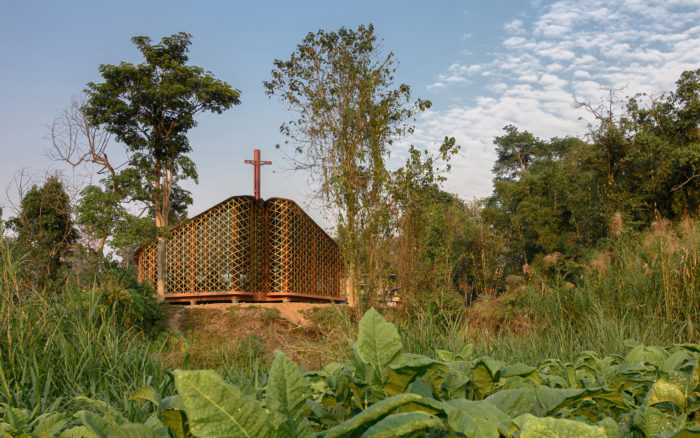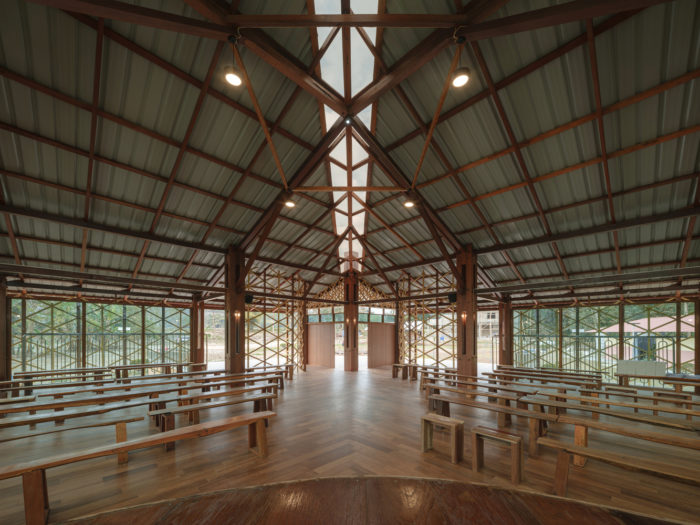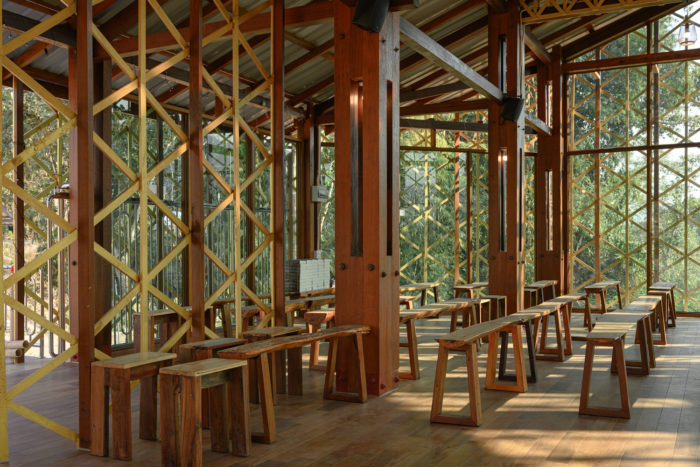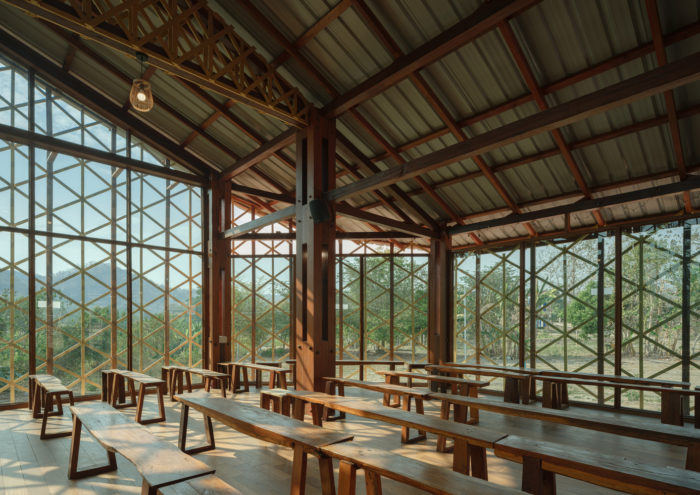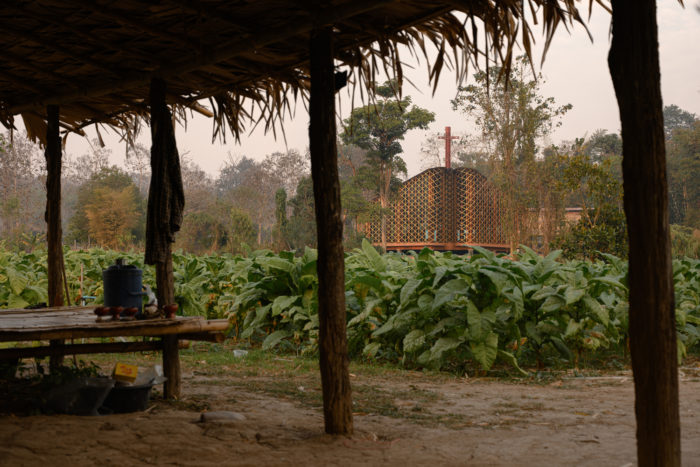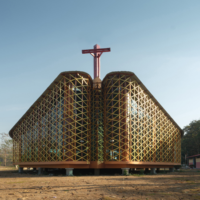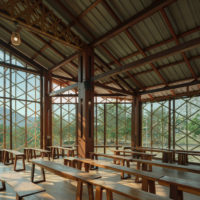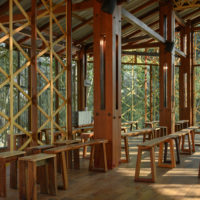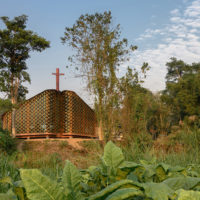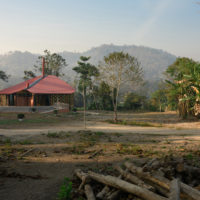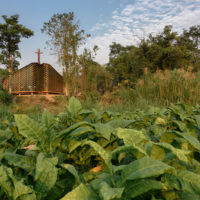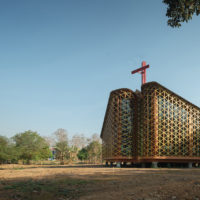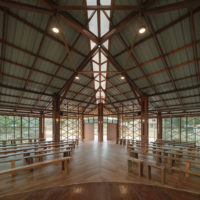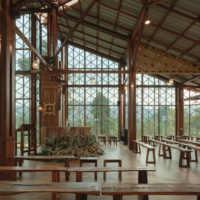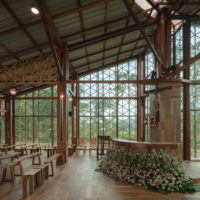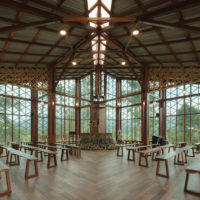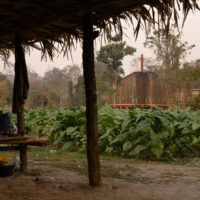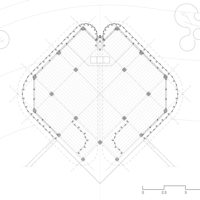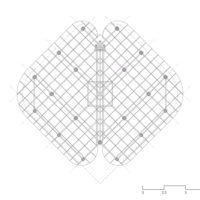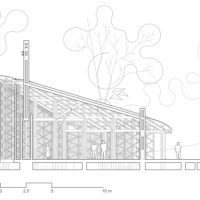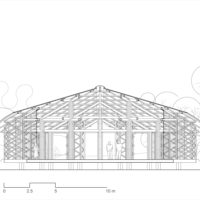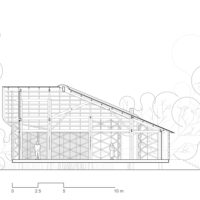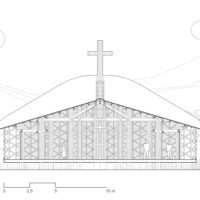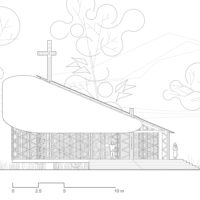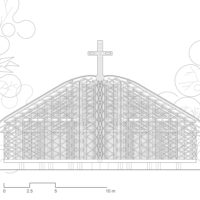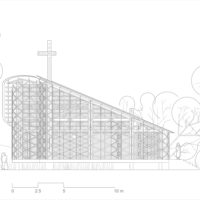St Xavier’s Oratory, a captivating testament of faith and architecture, stands proudly amidst the remoteness of Thailand’s Umphang district, a place accessible only through the winding and scenic Route 1090. Nestled on the fringes of the Karen Nationalist Union, a region entangled in an enduring struggle with Myanmar, this area is home to several refugee camps overseen by the Thai military.
The St Xavier’s Oratory, a few kilometers from the conflict zone and situated before the serene Umphang River, holds a poignant tale of divine intervention. Its design echoes a miraculous event attributed to St. Francis, where a crab, amidst a perilous shipwreck in the Moluccas, presented him with the crucifix he had once lost in the depths of the sea.
St Xavier’s Oratory’s Design Concept
The St Xavier’s Oratory’s architecture draws inspiration from ethnic Karen textile patterns, while its outward form seamlessly merges with the spatial arrangement guided by the rituals of the Catholic liturgy. The structural grid, conceived as an interwoven square of fibers, ascends towards the Umphang River, symbolizing the path to Communion along the central axis.
On the opposite side of the altar, the roof gently lowers, warmly embracing visitors and leading them to the place of worship. Following local customs, the temple was thoughtfully designed to allow the community to partake in mass while sitting on the floor. Local families generously provided benches crafted from reclaimed wood for more formal ceremonies.
The choice of material for this holy edifice is intriguing as well. Thakien wood considered a dwelling place for spirits and typically shunned by Buddhists, was used in the construction. Some of the wood was reclaimed from vernacular houses that were demolished, while the remaining timber was sourced from nearby communities under the guidance of the Department of Forestry. The result is a stunning blend of transparency and forest integration, with composite see-through pillars lending an air of weightlessness to the structure. Moreover, these pillars, positioned along the outer perimeter, act as passive ventilation conduits, allowing the gentle valley breeze to flow freely within the temple’s sacred space.
The skilled craftsmanship that brought St Xavier’s Oratory to life can be attributed to the master carpenter, Reen Sulee. His journey began in the Karen State, where he honed his knowledge of geometry and traditional carpentry during his youth spent in prison. Today, Mr. Sulee is renowned for his skill in building local vernacular houses, ensuring that the age-old Karen house-building traditions thrive.
St Xavier’s Oratory stands as more than just a place of worship. It symbolizes unity, hope, and cultural preservation in the heart of Thailand’s remote Umphang district. Amidst the challenges of its location near a region marred by conflict, this architectural marvel serves as a beacon of peace and a sanctuary for the faithful. As visitors approach the Oratory, they are not only greeted by its stunning design but also by the resilience and spirit of the local community. St. Xavier’s Oratory remains an enduring tribute to faith, culture, and the power of human ingenuity.
Project Info:
- Architects: Paco García Moro
- Area: 210 m²
- Year: 2022
- Photographs: Panoramic Studio
- Manufacturers: Aree Aphiluck
- Lead Architects: Reynaldo Tardielly
- Contractor: Wanmai Srisuk
- Carpenter: Reen Sulee
- Engineer: Lophadol Suwan
- Electricity: Preecha Laothanasan
- Country: Thailand
- © Panoramic Studio
- © Panoramic Studio
- © Panoramic Studio
- © Panoramic Studio
- © Panoramic Studio
- © Panoramic Studio
- © Panoramic Studio
- © Panoramic Studio
- © Panoramic Studio
- © Panoramic Studio
- © Panoramic Studio
- © Panoramic Studio
- Diagram. © Paco García Moro
- Floor Plan. © Paco García Moro
- Floor Roof. © Paco García Moro
- Section. © Paco García Moro
- Section. © Paco García Moro
- Section. © Paco García Moro
- Section. © Paco García Moro
- Elevation. © Paco García Moro
- Elevation. © Paco García Moro
- Elevation. © Paco García Moro


